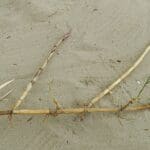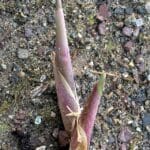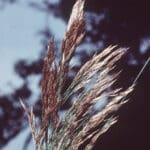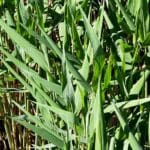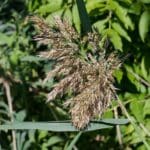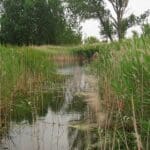Common Reed / Spring / Summer / Autumn / Edible
Common Reed is quite often a name that is used to describe the Bulrush – which has the cigar-like tops, the two plants and two names are actually commonly used for one another now which is quite confusing. In this blog we are going to look at Phragmites australis, the official Common Reed.
Common Names
Reed, Common Reed
Botanical Name
Phragmites australis
Scientific Classification
Kingdom – Plantae
Order – Poales
Family – Poaceae
Physical Characteristics for the Common Reed
Phragmites australis is the tallest grass in the British Isles, reaching heights of up to 3.5m. It is a robust perennial, spreading by tough, creeping rhizomes and stolons.
Leaves
The leaves are lanceolate, greyish-green and very broad – 18-60cm long and 1-6cm wide. They look a bit like bamboo leaves.
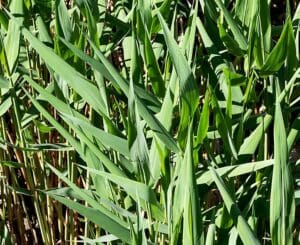
Stems
Tall, erect and rigid, growing in dense clumps on the edges of water.
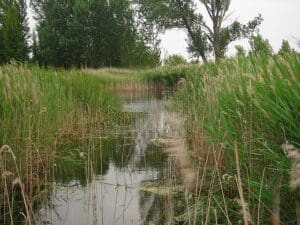
Flowers and Seeds
Flowers are dark purple panicles, 15 – 40cm long, that form in late Summer. Later the numerous long narrow, sharp pointed spike-ets appear greyer due to the growth of long, silky hairs. These eventually help disperse the minute seeds.
Habitat
Range and Distribution
Found throughout Europe and the British Isles except for high latitudes.
They often form large beds, known as reed-beds, in shallow water at the edges of lakes, canals and slow-moving rivers. They also tolerate brackish water, so are often found at the upper edges of estuaries and on other wetlands, such as grazing marshes. They can rapidly colonise patches of temporarily damp ground – for instance in quarries or new motorway verges – and persist long after they have dried out.
Known Hazards
Reeds are able to tolerate high levels of pollution in the water in which they grow. Some heavy metals form deposits on their roots as a plaque; other pollutants accumulate in the biomass where the plants are able to tolerate the toxins due to their fast growth rate and to enzymes present in the plant which are able to degrade certain compounds. It is important to assess the water condition and presence of any toxins the plants may have accumulated before foraging for this species.
The efficiency of Reed to filter out impurities in waste water has made them useful in natural water treatment systems.
Could be Confused with
This could potentially be confused with a number of the other water-loving grasses, I’d make a note to be wary of the Flag Iris which can be toxic and then the other one is of course the Bulrush but I think this would happen more due to the name of the two plants being used interchangeably for one another, the Bulrush is also edible.
Edible Uses
The entire plant is edible raw or cooked.
The young stems can be boiled or used to make flour, or dried, ground, sifted, hydrated and toasted like marshmallows. The underground stems can be used but are tough.
The young shoots can be eaten raw or cooked; remove the outer leaves, leaving the soft inner core, which is only 2.5-3cm long. These are excellent blanched, then served with cream, fresh lemon juice and salt.
The hardened sap from damaged stems can be eaten fresh or toasted.
The seeds can be crushed, mixed with berries and water, and cooked to make a gruel.
Rhizome tips are tender and can be used like bamboo shoots.
Notes on Herbal uses
The stem and rhizome have been traditionally used for digestive problems. People use Common Reed for diabetes, breast cancer, insect bites, and many other purposes, but there is no good scientific evidence to support these uses.
Extra notes from the Foragers
Dried reed stems have been used for millennia as thatching and construction material, in basketry, for arrows and pens, and in musical instruments.



